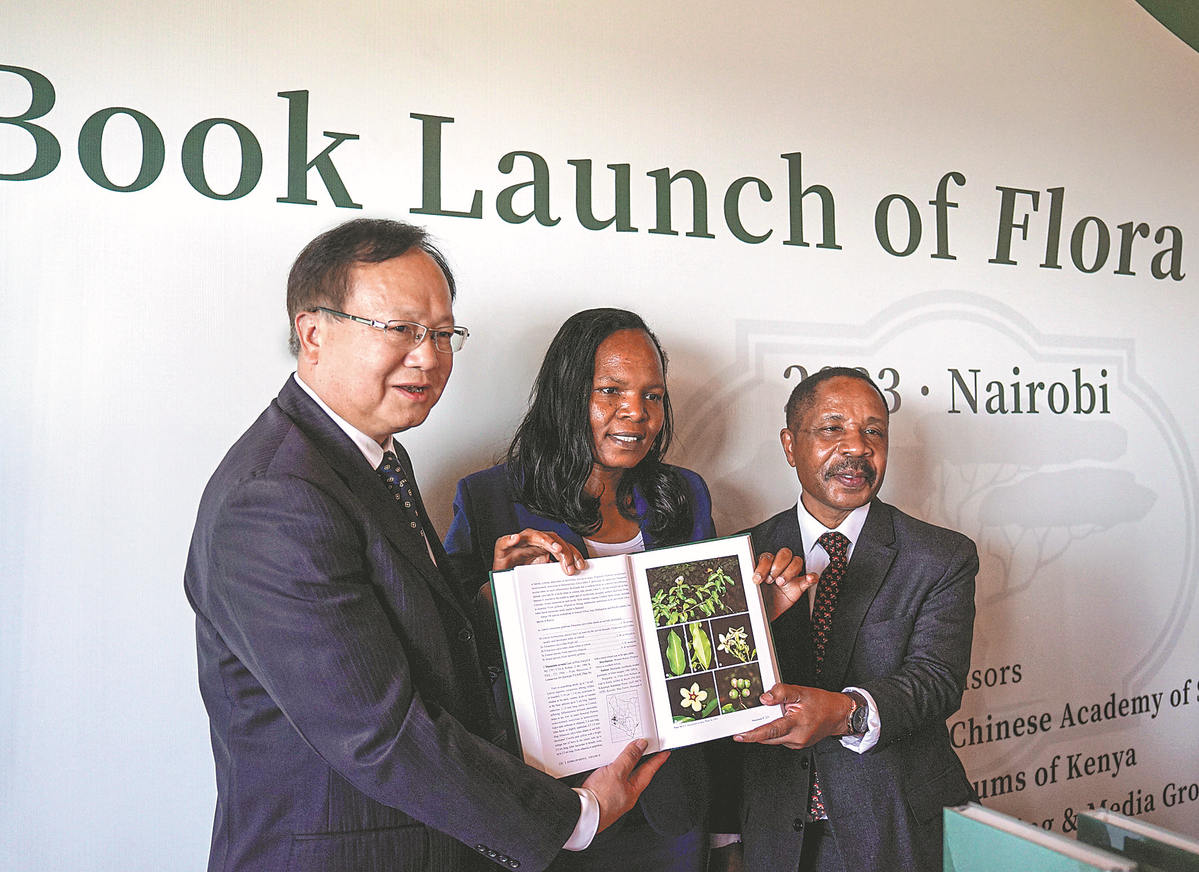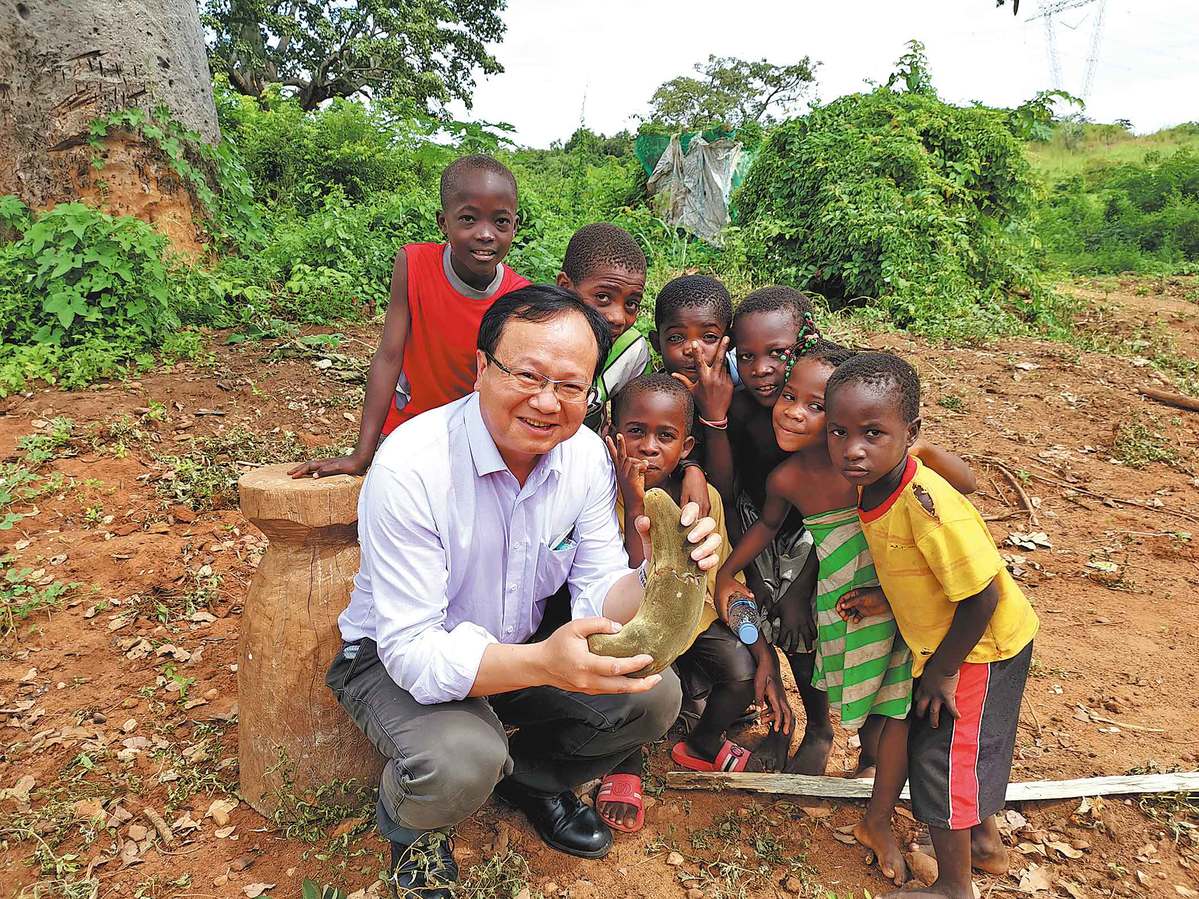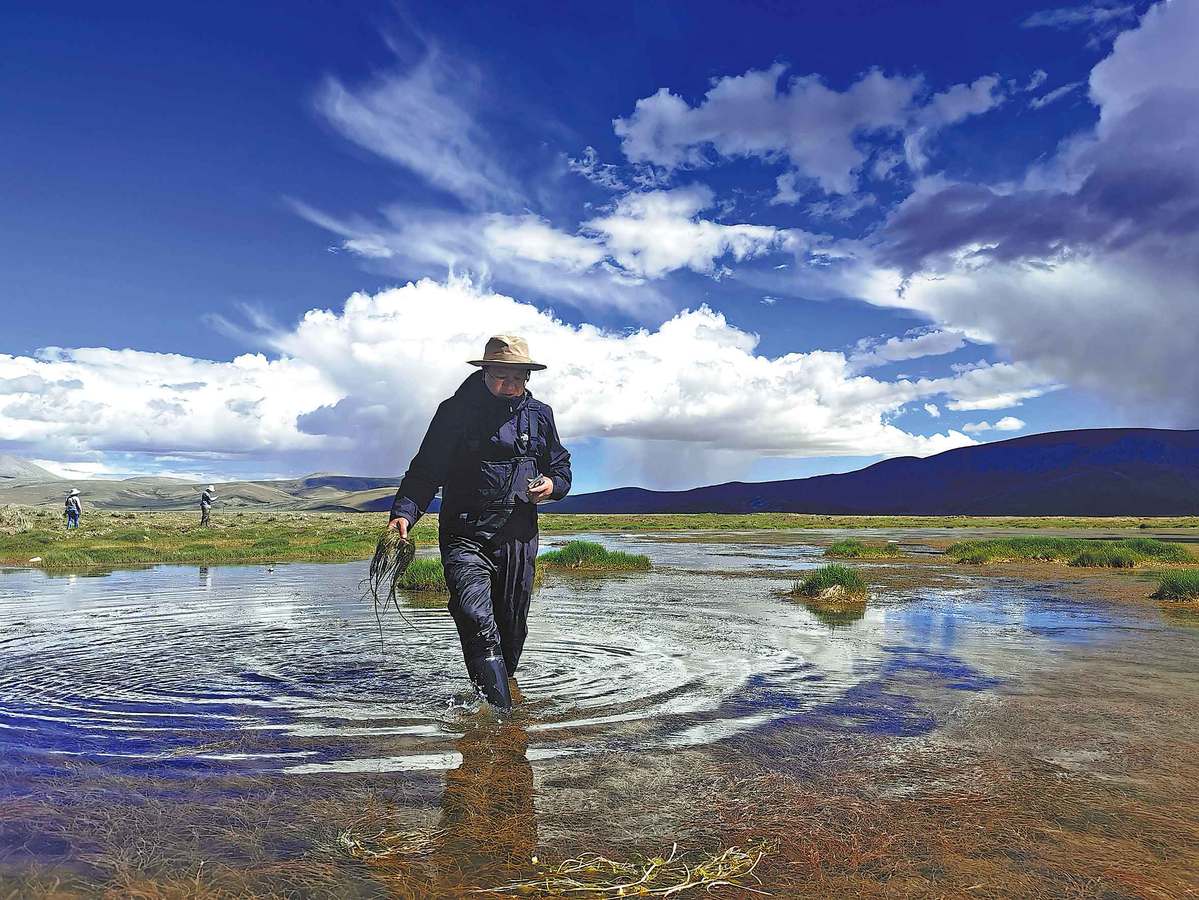Name:WANG Qingfeng
Tell:
Email:qfwang@wbgcas.cn
Organization:Wuhan Botanical Garden
China Daily:Botanist Documents Beauty of Kenya's Plants
2024-09-25

Wang Qingfeng (left), with Mary Gikungu (center), director-general of the National Museums of Kenya, and Geoffrey Mwachala, chief of research at the museum, attend the launch of the first volume of Flora of Kenya in Nairobi, Kenya, in September last year. [Photo/Xinhua]
Wang Qingfeng's office in Wuhan, Hubei province, is decorated with a host of items and novelties from Africa, and among them is a painting of a baobab tree on a special type of paper from a plant native to the continent.
The botanist has spent nearly 30 years traveling back and forth between Africa and China as he cataloged Africa's diverse plant life.
In September last year, the first volume of Flora of Kenya was published, with Wang serving as the chief editor on the Chinese side. It was the first book about the flora of a country other than China organized and compiled by Chinese researchers.
In May, a study systematically explaining the evolutionary history of the baobab tree was published in the journal Nature. Wang, who is director of the Wuhan Botanical Garden and director of the Sino-Africa Joint Research Center of the Chinese Academy of Sciences, was one of the two authors.
The first seeds of Wang's passion for the continent of Africa began in 1996 when he was sent to the University of N'Djamena in Chad to set up a laboratory.
Adjusting to the relatively harsh conditions compared to his life in Wuhan, Wang endured scorching temperatures, limited water, frequent power outages and the threat of diseases such as malaria and cholera, which were prevalent at that time.
Due to these risks, the botanist never went anywhere without his aromatic oil to ward away mosquitoes and quinine to combat the risks of malaria.
"At that time, there were no other medicines available. Some people said quinine had side effects, but having side effects was better than having malaria," Wang recalled.
"Over time, it has become a habit. Even now, you can find aromatic oil in my toiletry bag," he said. "But conditions have improved now. From Nairobi to the Maasai Mara, you can see significant changes in the roads, buildings and the environment."

Wang Qingfeng takes photos of a Welwitschia mirabilis, a plant that can survive hundreds of years in arid conditions, in Namibia in 2019. [Photo provided to China Daily]
Life in Africa could be tough, but the diversity of life attracted Wang to explore further. During an investigation in Bongor, Chad, he rented a motorcycle and had three to five locals help him carry specimen folders while he collected plants along the Logone River.
"In China, there is an ancient saying 'seeing more broadens knowledge'. The most important aspect of taxonomy is accumulation, progressing from not knowing to knowing, and within that knowing, discovering what is yet unknown," Wang said.
"It involves both interest and passion, as well as persistence, continuously driving oneself forward."
Similar to climbing Mount Kilimanjaro, after enduring the arduous journey step by step, when one finds themselves amid the lush and harmonious flora and fauna at around 4,000 meters above sea level, there is a sense of peace, he said.
"Sitting down quietly and observing, that feeling is truly different because this is what I study."
Beauty and barrenness coexist in Africa, according to Wang. Behind the multitude of species is a lack of corresponding research efforts. Cataloging flora is a complex and significant undertaking and requires the collective efforts of people from various places and researchers from different fields and locations, he said.

Wang carries out a research on a baobab tree in Zimbabwe in 2018. [Photo provided to China Daily]
Flora of Kenya's inclusion of over 7,000 plant species has filled the research gap in botanical resources in Kenya, and it has also had an impact on East Africa and the entire African continent, Wang said.
The idea for Flora of Kenya can be traced back to 1999 and Wang's first African student, Robert, who came from Kenya and was the initial link to the country for Wang. Since then, the idea of establishing Sino-African botanical research cooperation has always been on his mind.
With the impetus of the Belt and Road Initiative proposed in 2013, cooperation between China and Kenya has intensified.
In addition to conducting research in Kenya, the Sino-Africa Joint Research Center of the CAS has established field stations and laboratories in Ethiopia, Madagascar, Tanzania, Rwanda and Mauritania.
"Technological cooperation is a sustainable form of cooperation. With platforms as carriers and people as supporters, it can combine economic aid to play a greater role," Wang said.

Wang wades through a marsh during an inspection of aquatic plants in Kenya in 2014. [Photo provided to China Daily]
Behind every plant record can be found a human story. Polystachya danielana is the name of an orchid species found in the western highlands of Kenya. It was named in honor of plant taxonomist Daniel Odhiambo Miyawa, who pursued his doctoral degree at the Sino-Africa Joint Research Center.
Wang met him in 2014 and learned that he was an orchid expert at the National Museum of Kenya. Wang invited him to pursue a doctorate at the Sino-Africa Joint Research Center, and the following year, Miyawa arrived in Wuhan.
Unfortunately, in 2017, Miyawa fell seriously ill and passed away shortly thereafter. Therefore, a new species of orchid discovered the following year was named after him as a tribute to the orchid researcher.
To date, as a graduate adviser, Wang has guided over 20 African students.
"Before I retire, Flora of Kenya will definitely not be completed, but I believe more people will continue this work. It is a meaningful endeavor," Wang said. (China Daily)